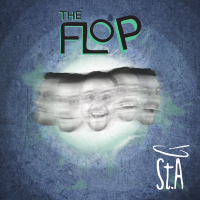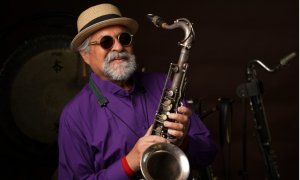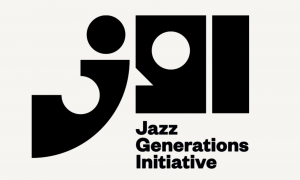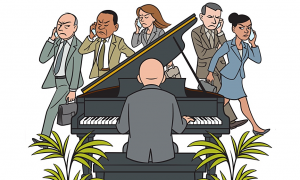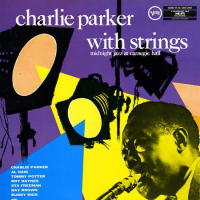
In the wake of my post on the lost string arrangements for Charlie Parker (go here), I was curious about how these scores wound up in the hands of alto saxophonist Clark Gibson and the orchestra he assembled in 2015 for his album, The Lost Arrangements of Bird With Strings (go here). So I reached out to Jeff Sultanof, who helped edit the music scores and parts for publication and availability to the public through ejazzlinescom.
For those unfamiliar with Charlie Parker, his nickname was Yardbird or Bird. Starting in the late 1940s, Parker began recording with strings, which was virtually unheard of for a modern jazz artist. Parker loved recording and performing with strings, since it gave his music—a mix of blues and bebop—legitimacy and class.
Jeff was kind enough to fill me in...
“Charlie Parker's collection of string arrangements was donated to the Institute of Jazz Studies (IJS) at Rutgers University in New Jersey by Teddy Blume before his death in 1992. Teddy was a violinist in the 'Bird with Strings' group and became Parker’s manager in 1950. After they were donated, photocopies were made of the entire collection by the IJS. The directors knew the collection would attract scholars and fans worldwide, and they wanted the photocopies to be examined, not the originals.
Rob DuBoff, owner of ejazzlines.com, which sells jazz arrangements, and the publisher of Jazz Lines Publications (JLP) and Walrus Music, has sought out all types of music manuscripts from collections all over the country. As a result, he attracts materials from collectors. JLP has over 600 publications of classic big band and studio orchestra arrangements. Roughly 99% of them are edited and engraved directly from original scores and/or music parts.
“Although I have worked in the music print industry for 40 years, first at Warner Bros. Music Publications and then at Hal Leonard, I've been editing jazz-ensemble and studio-ensemble music as well as film scores from original materials for my own use. Rob has been an editor of music scores for over 25 years. Rob and I have edited most of the JLP publications. Recently, Dylan Canterbury, on staff at JLP, has been editing them as well.
“Rob has a copy of everything in the Parker Collection, which he obtained from the IJS. During the course of research on the materials, he found various compositions and arrangements that had never before been recorded. Based on the markings on the parts, it turns out that many of them were played or at least run through.
“In some cases, wrong notes in the scores and parts caused a piece to be put aside. This used to happen frequently in the big band era, when perfectly good music was tossed aside because of mistakes in the music that no one had time to fix.
“It is hard to describe the thrill that goes through your body when you find something like George Russell's version of Ezz-thetic for Parker, since it was not known previously. Equally thrilling is that this is one of the few arrangements that Russell wrote for strings. Cleaning these things up by fixing wrong notes, clarifying rhythms and generally making them easier to read is a privilege. It's also gratifying knowing where the arrangements originated and that others going forward will be blown away when they get to play and hear the music.
“Other things have been learned from examining manuscripts. We found that a score previously thought to be written by one arranger was not written by him at all, that it was 'ghosted.' This happened with Autumn in New York, which was clearly in a different handwriting than the handwriting of the credited arranger, Joe Lipman. Some detective work has led me to believe that it was written by Glenn Osser, who was an arranger with Mercury Records, Granz's distributor.
“The arrangement of I've Got You Under My Skin did not have an arranger credit, but a chord name gave the arranger away—Johnny Carisi. He was the only arranger I've known who would write a #9 chord as a b10. I studied with Carisi as did James Chirillo, a guitarist and composer-arranger busy in ensembles and recording dates. I spoke with James when I worked on the project for publication.
“One more note: Rob properly licenses this music from the copyright holders. It can be an adventure trying to discover who owns a piece. Rob even pays the arranger's estate, something he does not have to do.
“The Parker with strings scores are only one of many success stories that Jazz Lines has made happen in preserving this music and making it available. Certainly Jazz Lines' work enabled Clark Gibson to record his CD—The Lost Arrangements of Bird With Strings. It was much appreciated that he credited us at the JEN Convention in Louisville, Ky., last year when he played a concert to promote it."
JazzWax clips: Here are studio-session clips of Charlie Parker with strings:
Here's Repetition, arranged by Neal Hefti and recorded in December 1947, just before the second American Federation of Musicians recording ban that took effect Jan. 1, 1948...
Here's Just Friends recorded in November 1949 and arranged by Jimmy Carroll...
Here's Everything Happens to Me from the same date...
Here's Laura in July 1950, arranged by Joe Lipman...
And here's Stella by Starlight in January 1952, arranged by Joe Lipman...
For those unfamiliar with Charlie Parker, his nickname was Yardbird or Bird. Starting in the late 1940s, Parker began recording with strings, which was virtually unheard of for a modern jazz artist. Parker loved recording and performing with strings, since it gave his music—a mix of blues and bebop—legitimacy and class.
Jeff was kind enough to fill me in...
“Charlie Parker's collection of string arrangements was donated to the Institute of Jazz Studies (IJS) at Rutgers University in New Jersey by Teddy Blume before his death in 1992. Teddy was a violinist in the 'Bird with Strings' group and became Parker’s manager in 1950. After they were donated, photocopies were made of the entire collection by the IJS. The directors knew the collection would attract scholars and fans worldwide, and they wanted the photocopies to be examined, not the originals.
Rob DuBoff, owner of ejazzlines.com, which sells jazz arrangements, and the publisher of Jazz Lines Publications (JLP) and Walrus Music, has sought out all types of music manuscripts from collections all over the country. As a result, he attracts materials from collectors. JLP has over 600 publications of classic big band and studio orchestra arrangements. Roughly 99% of them are edited and engraved directly from original scores and/or music parts.
“Although I have worked in the music print industry for 40 years, first at Warner Bros. Music Publications and then at Hal Leonard, I've been editing jazz-ensemble and studio-ensemble music as well as film scores from original materials for my own use. Rob has been an editor of music scores for over 25 years. Rob and I have edited most of the JLP publications. Recently, Dylan Canterbury, on staff at JLP, has been editing them as well.
“Rob has a copy of everything in the Parker Collection, which he obtained from the IJS. During the course of research on the materials, he found various compositions and arrangements that had never before been recorded. Based on the markings on the parts, it turns out that many of them were played or at least run through.
“In some cases, wrong notes in the scores and parts caused a piece to be put aside. This used to happen frequently in the big band era, when perfectly good music was tossed aside because of mistakes in the music that no one had time to fix.
“It is hard to describe the thrill that goes through your body when you find something like George Russell's version of Ezz-thetic for Parker, since it was not known previously. Equally thrilling is that this is one of the few arrangements that Russell wrote for strings. Cleaning these things up by fixing wrong notes, clarifying rhythms and generally making them easier to read is a privilege. It's also gratifying knowing where the arrangements originated and that others going forward will be blown away when they get to play and hear the music.
“Other things have been learned from examining manuscripts. We found that a score previously thought to be written by one arranger was not written by him at all, that it was 'ghosted.' This happened with Autumn in New York, which was clearly in a different handwriting than the handwriting of the credited arranger, Joe Lipman. Some detective work has led me to believe that it was written by Glenn Osser, who was an arranger with Mercury Records, Granz's distributor.
“The arrangement of I've Got You Under My Skin did not have an arranger credit, but a chord name gave the arranger away—Johnny Carisi. He was the only arranger I've known who would write a #9 chord as a b10. I studied with Carisi as did James Chirillo, a guitarist and composer-arranger busy in ensembles and recording dates. I spoke with James when I worked on the project for publication.
“One more note: Rob properly licenses this music from the copyright holders. It can be an adventure trying to discover who owns a piece. Rob even pays the arranger's estate, something he does not have to do.
“The Parker with strings scores are only one of many success stories that Jazz Lines has made happen in preserving this music and making it available. Certainly Jazz Lines' work enabled Clark Gibson to record his CD—The Lost Arrangements of Bird With Strings. It was much appreciated that he credited us at the JEN Convention in Louisville, Ky., last year when he played a concert to promote it."
JazzWax clips: Here are studio-session clips of Charlie Parker with strings:
Here's Repetition, arranged by Neal Hefti and recorded in December 1947, just before the second American Federation of Musicians recording ban that took effect Jan. 1, 1948...
Here's Just Friends recorded in November 1949 and arranged by Jimmy Carroll...
Here's Everything Happens to Me from the same date...
Here's Laura in July 1950, arranged by Joe Lipman...
And here's Stella by Starlight in January 1952, arranged by Joe Lipman...
This story appears courtesy of JazzWax by Marc Myers.
Copyright © 2025. All rights reserved.







